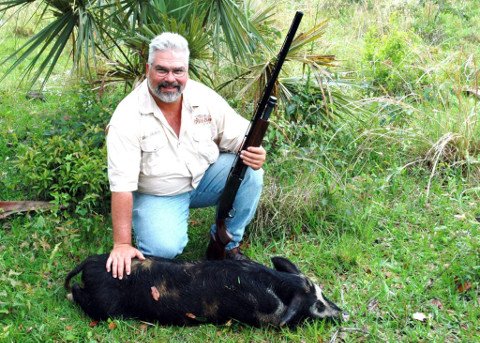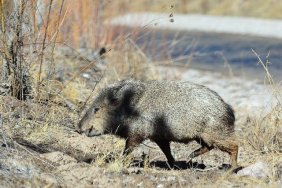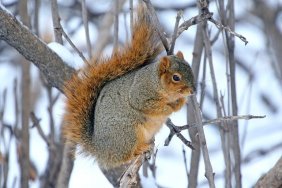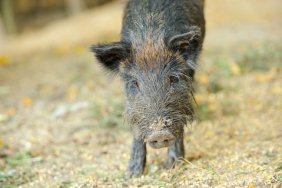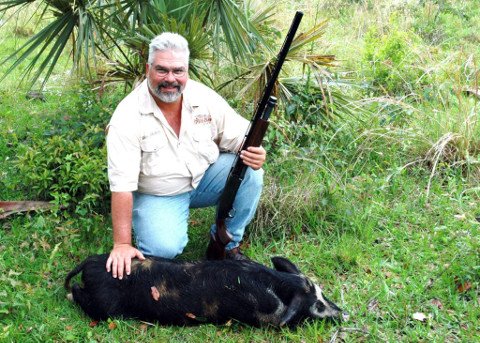
Feral hogs rank among the most feared beasts in North America. Leaner and much more muscled than any barnyard pig, a big boar can weigh close to 500 pounds. Bristling with razor sharp tusks and protected by a tough hide covering hardened scar tissue over its head and shoulders, a big pig fears nothing.
“An adult hog doesn’t have many enemies,” advised Mike Tussey with Osceola Outdoors in Naples, Fla. “Once it reaches about six months old, not much is going to tangle with a healthy hog. If you’re faced with an extremely mad 250-pound boar full of teeth and tusks, it could get ugly.”
With few natural predators, feral hog populations boomed recently. In many areas, they became pests that cause considerable damage to agricultural crops. In most states, sportsmen can hunt hogs all year long without limit on private lands. On public lands, most states allow hunters to take feral hogs as bonus game while pursuing other species, but check the regulations first.
“In Texas, if I catch a hog and don’t kill it, I’ll never be invited back on that property,” quipped Dan Moody with Dan Moody’s Texas Hunting Guide Services in Pearsall. “If I was a farmer, I’d want them all dead.”
Pigs can live almost anywhere, but prefer bottomland forests, creek drainages, swamps and agricultural fields. They might roam over many acres, but typically stay close to water, cover and food sources. Omnivorous, hogs eat almost anything including nuts, fruits, berries, roots, mushrooms, invertebrates, small animals and even carrion.
“Hogs don’t have a home range,” explained Josh Forbes, an Alabama hog hunter. “They go wherever they can find enough food, water and shelter. Sows and piglets wander around looking for food and water. Boars follow the sows.”
Pigs often stay in dense vegetation near water. During hot weather, hogs wallow in muck to cool off and protect their skin from bugs or sun. After leaving the wallows, hogs may rub against trees, fence posts, powerline poles and rocks, leaving the bottoms caked in mud. In dry country, look for hogs around waterholes. Even a muddy puddle may provide cooling relief for a hot tusker.
People can hunt hogs in many ways. Many fall to deer hunters sitting in stands. Some states allow sportsmen to erect feeders to attract hogs. If not, put up a stand or blind near good food or water sources.
In more open country, people can stalk tuskers. During the day, pigs typically hunker down in the lowest, thickest, wettest cover they can find. Moving slowly into the wind, stalkers might approach fairly close to resting pigs. Although hogs can’t see very well, they instantly notice movement. Slowly move through cover, stopping frequently to scan with binoculars and listen for squeals, grunts or other sounds.
Since hogs can cause considerable damage to crops and pastureland, many landowners welcome, even encourage, sportsmen to hunt on their properties. Knocking on a few doors might open up considerable acreage for hunting.
 John N. Felsher grew up in Slidell, La, and now lives in Semmes, Ala. He’s a professional freelance writer and photographer with more than 2,200 articles in more than 138 different magazines to his credit. He also co-hosts a weekly live radio show every Thursday from noon to 1 p.m. Central Time on WNSP 105.5 FM in Mobile, Ala. and a recorded syndicated show that goes out to multiple stations in Alabama each week. (See www.gdomag.com) Contact him through his website at www.JohnNFelsher.com.
John N. Felsher grew up in Slidell, La, and now lives in Semmes, Ala. He’s a professional freelance writer and photographer with more than 2,200 articles in more than 138 different magazines to his credit. He also co-hosts a weekly live radio show every Thursday from noon to 1 p.m. Central Time on WNSP 105.5 FM in Mobile, Ala. and a recorded syndicated show that goes out to multiple stations in Alabama each week. (See www.gdomag.com) Contact him through his website at www.JohnNFelsher.com.
Photo caption: Author John N. Felsher shows off a wild hog he bagged on the Silver Pines Preserve near Arcadia, Fla. (Photo submitted by John N. Felsher)
